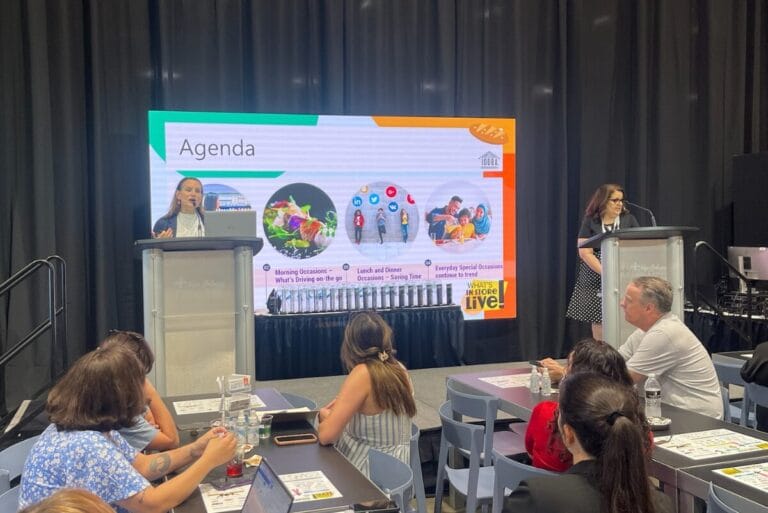“These emerging flavors reflect a broader shift toward globally inspired, sensory-rich baking that balances familiarity with innovation,” he said.
Cody Masters, executive chef and EVP of culinary and industrial sales for Everson Spice Co., said global flavor experimentation has entered a new phase, and bakers should take note.
“Applying globally influenced flavors to mainstream domestic analogs has become the new norm,” he said. “Certain brands or companies will gravitate to this faster than others while also leveraging their regional demographic’s buying patterns against said flavors. There is a fine line between educating a consumer versus exploiting what already works.”
Innovation around complex heat, especially “swicy,” generates interest, particularly with Gen Z.
“The data shows that legacy flavors, even ones as mainstream as ranch or pickle, do little to interest this generation’s buying power,” Masters said. “However, a simple fusion of introducing a unique heat source immediately drives attention.”
To that end, he suggested taking a more simplistic approach, such as choosing serrano instead of jalapeño, adding miso to classic caramel, or trying a new version of an apple fritter with hot honey.
Roerink said bringing flavor innovation into a category is one way to get shoppers to make an unplanned purchase.
“The consumer might try a new flavor in response to something they’re seeing on social media, or they’ll jump on a limited-time offer,” she said. “Often you see these innovations in their shopping cart right alongside their core items, but it’s important to balance the two.”
Perhaps that’s why brand collaborations have been gaining traction and finding considerable success in recent years. Buzzy launches such as Sour Patch OREOs or Frosted Strawberry Pop-Tarts Nothing Bundt Cakes mash one brand flavor with another, opening up a world of new possibilities for CPG brands.
“Consumers have an appetite for trying something different but are often hesitant to go all-in on an innovation and risk wasting money on something that doesn’t taste good,” Roerink said. “So, a collaboration from two trusted brands not only draws in fans of the existing products, but it also mitigates some of that risk.”
She foresees more innovation in this area, including pop culture collabs tied to movies and video games. It all goes back to consumers’ willingness to spend a little bit more for special occasions and celebrations.
Lyons Wyatt agreed these mashups have momentum.
“They’ve really taken off because of the co-licensing and co-branding, and I don’t think it’s going to stop in the near future,” she said. “It’s a way to take loyal customers from one brand and introduce them to another brand, and there’s a beneficial experience for both sides.”
Though today’s economic landscape might look uncertain, there’s plenty for the baking industry to be optimistic about. As the definition of value evolves, consumers are seeking more than low prices. They want products that offer quality, convenience, health benefits, unique experiences and even emotional connection. From bold new flavors and brand collaborations to right-sized portions and health innovations, bakers must find fresh ways to meet these changing needs.
This story has been adapted from the 2025 New Products Annual of Commercial Baking. Read the full story in the digital edition here.








